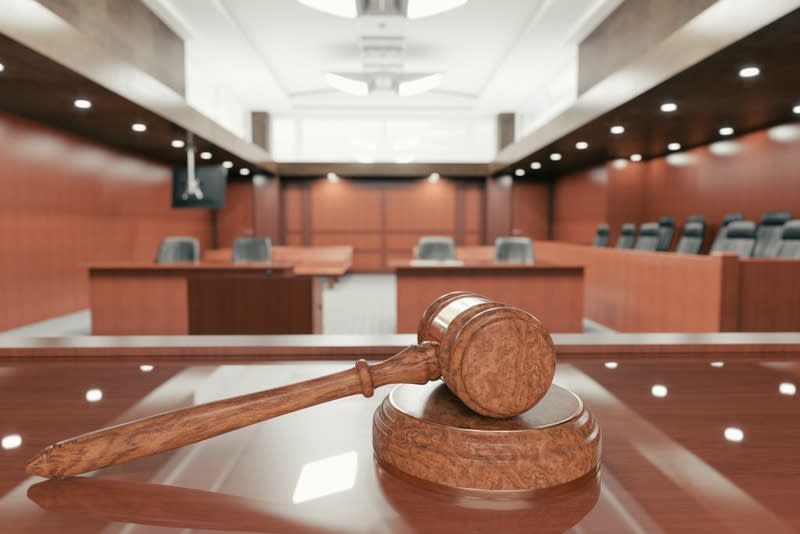Greater focus on crime sparks another wave of juvenile justice bills

Photo: Getty Images
For decades, state legislators and criminal justice advocates have worked to change the juvenile legal system, striving to expand access to rehabilitation and keep young people from returning to crime.
During this year’s legislative session, nearly every state has considered some form of juvenile justice legislation, according to a National Conference of State Legislatures database.
These efforts across at least 43 states plus Washington, D.C., have seen varied levels of success and come from a diversity of viewpoints. Some legislatures considered policies that would create alternatives to incarcerating teens, while others debated bills that would toughen potential penalties for kids as young as 10 years old. Criminal justice advocates warn that strict new policies could roll back previous overhauls of the system.
This year, states including Connecticut, Kansas, Kentucky, Louisiana, Maryland, Massachusetts, North Carolina and Tennessee have examined ways to tackle crimes committed by children. Some of these bills would establish independent oversight of juvenile corrections agencies, create new avenues for youth to access diversion programs, or automatically transfer juveniles convicted of certain crimes into the adult legal system.
The efforts go beyond prospective new laws.
State officials in Connecticut, for example, plan to release data in July to measure racial disparities among juveniles offered access to diversion programs. In Louisiana, legislative leaders are looking to redirect $700 million from a state savings account and use it for construction projects, including prisons and juvenile detention centers.
The wave of juvenile justice legislation and policy changes comes amid a heightened public perception that crime, including youth crime, is rising. Political rhetoric and sensational media coverage, rather than statistics, are driving that perception.
Violent crime across the United States decreased in 2022 — dropping to about the same level as before the onset of the COVID-19 pandemic, according to the FBI’s annual crime report. Property crimes, however, rose during the same period. Crime data compiled by the Council on Criminal Justice think tank also suggests that most types of crime are reverting toward pre-pandemic levels.
The juvenile arrest rate for all offenses peaked in 1996, and has since declined, according to available data from the federal Department of Justice’s Office of Juvenile Justice and Delinquency Prevention. Those levels track with the nation’s overall crime rate, which reached its peak in the 1990s.
Meanwhile, policymakers in some states are paying more attention to the teens themselves and their treatment while in detention. In New York, a state comptroller’s report, released in April, found that staffing shortages and lack of staff training have contributed to an increase in self-harm and drug use among the youth held in the state’s juvenile justice facilities.
And lawsuits filed earlier this year in Illinois, Maryland, New Jersey and New York allege sexual abuse within juvenile facilities in those states.
Diversion and workforce programs
Kansas Gov. Laura Kelly, a Democrat, signed a bill into law earlier this year that will allow teens held in the state’s only juvenile corrections facility to attend outside educational and vocational programs or training.
“It’s very important that we pass laws and create systems that give those cycling out the system the best possible opportunity for a good outcome,” Kansas Republican state Rep. Stephen Owens said in an interview with Stateline. Owens chairs the Committee on Corrections and Juvenile Justice.
After the law goes into effect in July, the secretary of corrections can develop a work-release program for juveniles. The Department of Corrections is still working on outlining who will be eligible and what kinds of programs will be available, according to Megan Milner, the department’s deputy secretary of juvenile and adult community-based services.
It’s very important that we pass laws and create systems that give those cycling out the system the best possible opportunity for a good outcome.
– Kansas Republican state Rep. Stephen Owens
The new law, Milner said, will allow teens to explore other vocational programs that align with their career interests and connect them with employment opportunities.
“This is a good opportunity for them, but it’s also a good opportunity for our communities,” Milner said.
The Kansas legislature also allocated $2.5 million to Mirror Inc., a private corporation that provides behavioral health care, prevention programs and residential reentry services, to build a new inpatient juvenile substance use treatment center in south central Kansas. The facility would have at least 40 beds.
Focus on preteens
The Maryland legislature also tackled a controversial juvenile justice bill this session, which was recently signed into law by Democratic Gov. Wes Moore. The law will extend state oversight to younger juveniles between 10 and 12 years old who have been arrested for serious offenses, including those involving a firearm, motor vehicle theft, animal abuse or a third-degree sexual offense.
It will go into effect in November.
Minors also could be sent to a diversion program operated by a local state’s attorney’s office or a community-based organization.
The law will establish a commission to review the Maryland Department of Juvenile Services’ education and diversionary programs, research evidence-based programs and investigate deaths involving children under state supervision.
It also will allow state’s attorneys to review complaints and case files of children under state supervision.
“Those structural changes, I would argue, needed to be made, particularly as the juvenile system evolved after the pandemic and the services that were and weren’t available,” said Maryland Del. Luke Clippinger, a Democrat and chair of the House Judiciary Committee, who sponsored the legislation.
Some of the measure’s opponents argue that the policy changes won’t sufficiently support young people and would likely lead to greater racial disparities in the juvenile justice system.
“The data and the research is very, very clear that if we have 10-, 11- and 12-year-olds that we are concerned about, those are kids who need and will benefit the most from services — not from detention,” said Alice Wilkerson, the executive director of Advance Maryland, a statewide progressive advocacy group. She testified against the bill and is a member of the Maryland Youth Justice Coalition.
“[The law] opens up more paths to arrest and detention for those very young kids,” Wilkerson said in an interview.
The legislation was introduced following an increase in the number of total juvenile complaints, which includes violent crimes, nonviolent felonies and misdemeanors, in fiscal year 2023.
State data from the Maryland Department of Juvenile Services shows that since fiscal year 2014, the number of juvenile complaints has consistently decreased. While the number of complaints rose to 12,388 in fiscal year 2023, compared with 7,100 in fiscal year 2021, the number remains lower than pre-pandemic levels.
Complaints for youth under age 13 decreased from 1,083 in fiscal year 2022 to 299 in the last fiscal year, according to the same state data. Black children are disproportionately represented as the subjects of the complaints — about 63%, despite making up about 30% of the state’s youth population.
Some proponents say the numbers are misleading because they don’t account for staff shortages in many law enforcement agencies across the state, which lead to fewer misdemeanor cases being handled by police and, consequently, fewer juvenile arrests being recorded.
“I’d love to say juvenile crime is down. I think that would be a lie. I think that would be being dishonest with the community,” said Montgomery County State’s Attorney John McCarthy, a Democrat, who supported the measure.
‘Raise the Age’ laws
Both Massachusetts and North Carolina are considering bills related to “Raise the Age” laws, which increase the age of criminal responsibility to at least 18.
Such laws keep 16- and 17-year-olds from being automatically charged as adults. In some states, plans are in place to gradually raise the age over several years, up to at least 21 or 25.
A growing body of research shows that the prefrontal cortex, the decision-making part of the brain, isn’t fully developed until around age 25. Criminal justice advocates also have pointed to research showing that teens who have been arrested are less likely to commit additional crimes if they are prosecuted as minors rather than adults, and to the fact that young people incarcerated in adult prisons are at a much greater risk of sexual assault.
The bill under consideration in Massachusetts would raise the age of criminal responsibility from 18 to 20 by 2028. Massachusetts first raised its age of juvenile jurisdiction in 2013, moving 17-year-olds out of the adult court system.
The bill is still in committee, and the legislature has until July 31 to pass the measure, according to its sponsor, Democratic state Sen. Brendan Crighton.
“To make a decision that then impacts the rest of their life — their ability to graduate high school, to get a job, start a family, buy a home — all these things that are pretty important milestones in everyone’s lives are greatly delayed and sometimes never picked back up again because they get stuck in a system,” Crighton said.
The North Carolina bill, in contrast, would modify the state’s definition of a delinquent juvenile to exclude 16- and 17-year-olds who commit Class A-E felonies, which include serious offenses such as armed robbery and homicide, meaning they’d be treated as adults in Superior Court. The bill passed the Senate and remains under consideration in the House.
Some critics of the proposed changes said they would roll back the state’s “Raise the Age” law, which was enacted in 2017 and implemented in 2019.
The bill also would change the frequency of secure custody hearings. Instead of every 10 days, as currently required by law, these hearings, which determine whether continued detention is necessary, would be held every 30 days.
North Carolina state Sen. Mujtaba Mohammed, a Democrat who voted for the measure, said he nonetheless worried about “trauma associated with incarceration.” Ultimately, legislators amended the bill to allow any party — including the juvenile’s attorney, the judge or the court counselor — to request an additional hearing. Prosecutors and the juvenile’s attorney also could agree to send the case back to juvenile court if necessary.
“What we tried to do is just make it more of a streamlined process,” Mohammed said.
This report was first published by Stateline, which like NC Newsline, is part of the national States Newsroom network.
The post Greater focus on crime sparks another wave of juvenile justice bills appeared first on NC Newsline.


